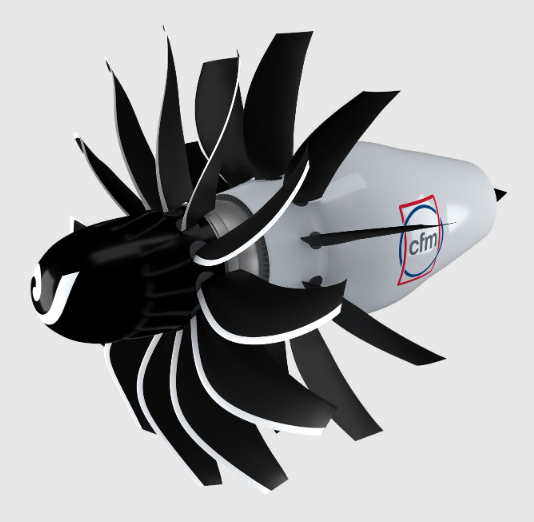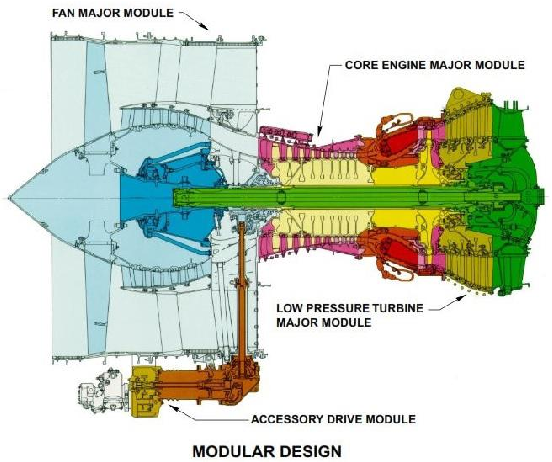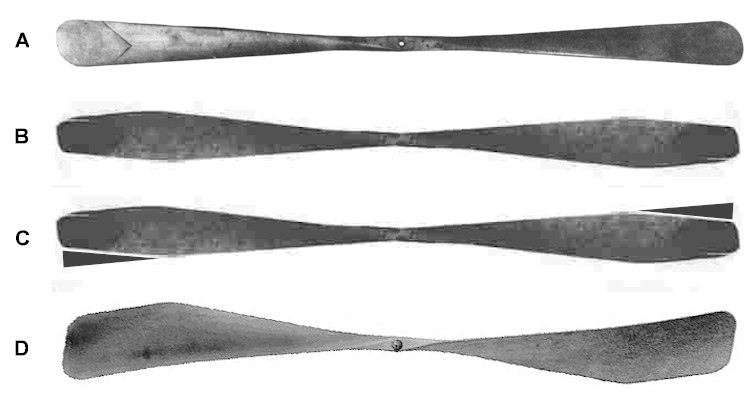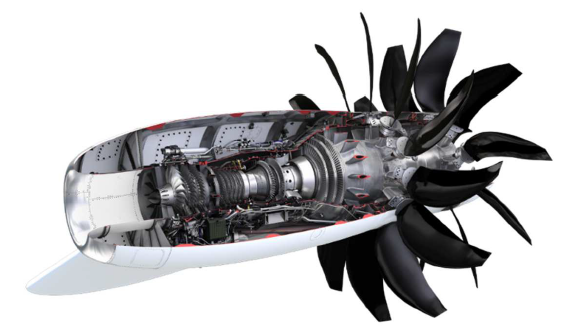Leeham News and Analysis
There's more to real news than a news release.
Engine makers tout “Plan A” but have “Plan B” backups in R&D
Subscription Required
By Scott Hamilton
June 23, 2025, © Leeham News, Paris: CFM International touts its Open Fan RISE engine as the wave of the future. (CFM is a 50-50 joint venture between GE Aerospace and Safran.)
Rival Pratt & Whitney says evolution of its Geared Turbo Fan is the best engine choice going forward.
Neither company will admit that it is also researching and developing a Plan B engine. For CFM, this is a conventional turbofan. For PW, this is a new Open Fan. But during the Paris Air Show, LNA confirmed that both have a Plan B engine in development.
PW has gone out of its way to dismiss the very idea of an Open Fan engine. Rick Deurloo, the president of Pratt & Whitney Commercial, won’t even talk about the “competitor.” Deurloo makes it clear—publicly, at least—that an evolution of PW’s Geared Turbo Fan (GTF) is the best solution for the next generation engine for the single aisle market, in its view.
Mike Winter, RTX’s Chief Engineer, dismissed the Open Fan as “sub-optimal” on a successor to the Airbus A320neo and Boeing 737 MAX families. It involves too many installation compromises on this size aircraft, he says. RTX is the parent of PW.
But, says one person with direct knowledge, PW fully understands that if CFM is successful in solving all the challenges of an Open Fan and meets the publicly stated goal of improving fuel consumption by 20% compared with today’s GTF and CFM LEAP engines, PW’s gain of an evolutionary GTF won’t be competitive.
So, says the person with direct knowledge of PW’s activities, the development of an Open Fan alternative engine is being worked on as PW’s Plan B.
Furthermore, PW’s sister company, Pratt & Whitney Canada, publicly disclosed its development of an Open Fan engine in a briefing on Tuesday this week. This engine is for a new 70-100-seat aircraft designed by the start-up company MAEVE. PW is following PWC’s development.
GE sees 2,500 LEAP engine deliveries by 2028, enough for more than 1,000 A320neos and 737 MAXes
Subscription Required
By Scott Hamilton
Feb. 24, 2025, © Leeham News: CFM International plans to deliver 2,500 LEAP engines by 2028, enough to power more than 1,000 Airbus A320neos and Boeing 737 MAXes plus spare engines in a single year.
CFM is the 50-50 joint venture between GE Aerospace and Safran. The 737 exclusively uses the LEAP. The A320neo family splits its powerplant business between CFM and Pratt & Whitney’s Geared Turbo Fan engines. Between the MAX and a portion of the A320neo engines, CFM has a solid majority of the market share for the mainline single-aisle aircraft sector.
CFM is the brand for the CFM56 and LEAP, but GE and Safran benefit from the aftermarket business. Between the two engines, the maintenance, repair, and overhaul business is big and profitable.
Larry Culp, CEO of GE Aerospace, spoke at the Barclays investors conference on Feb. 20.
“There’s no question that from an aftermarket perspective, LEAP on top of CFM56 is going to keep us very busy,” Culp said. “We haven’t been particularly good at calling the outlook here because we’ve undershot the reality with the CFM56 the last couple of years.”
Culp said that GE continues to believe that it’s got several years of growth ahead. “We probably don’t see an apex until probably the 2027, 28-ish time period, and then we’ll see a gradual fade with the CFM56.
“I think we’re still talking about 2,000 shop visits at the end of the decade. We’ll see if we’re right or wrong on that, but that’s our current view. I think our partners at Safran have in effect echoed that recently at their own earnings call.”
Safran hails ‘landmark’ 2024 with record results
By Leeham News Team
Feb. 14, 2025, © Leeham News: Safran has announced “record-breaking” financial results for 2024, with revenues, profits, and free cash flow all reaching new highs, helped by strong aftermarket activity and the return to profitability of its aircraft interiors division.
 The strong performance has prompted an upward revision of its 2025 outlook, with revenue and income forecast to be higher than the figures given in December.
The strong performance has prompted an upward revision of its 2025 outlook, with revenue and income forecast to be higher than the figures given in December.
Reflecting on the 12-month period in a call with analysts on Friday morning, CEO Olivier Andriès described it as a “landmark year” for the company, despite “persistent supply chain difficulties as well as residual inflationary pressures”.
For the 2024 financial year, Safran reported adjusted revenue of €27.3 billion, a 17.8% increase, while recurring operating income surged by 30.1% to €4.1 billion, representing 15.1% of sales.
Free cash flow reached €3.19 billion, with shareholders set to benefit from a proposed dividend of €2.90 per share, pending approval.
Consolidated figures for the year were similarly robust, with total revenue at €27.7 billion and operating income at €4.19 billion.
Bjorn’s Corner: New engine development. Part 25. New versus old, CFM56 vs. LEAP
September 20, 2024, ©. Leeham News: We do an article series about engine development and why it has longer timelines than airframe development. It also carries larger risks of product maturity problems when it enters service than the airframe of an airliner.
In our look at examples of recent developments with problems and these put in a historical perspective, we compare the CFM56 to the LEAP, comparing their reliability and durability.
“Hyper focus on reliability and durability out of the gates”
By Scott Hamilton

THE CFM Open Fan engine could be at least 20% more fuel efficient than today’s CFM LEAP and P&W GTF, CFM partners say. Credit: CFM.
Sept. 11, 2024, © Leeham News: GE Aerospace and Safran advance on the CFM RISE Open Fan engine with an overriding goal: “Our customers really want us to be hyper-focused on reliability and durability out of the gates.”
GE and Safran are developing a potentially game-changing engine and marketing it via the 50-50 joint venture, CFM International. The entry-into-service goal is 2035.
Customer demand for reliability and durability “out of the gates” is understandable. Engines produced by CFM, Pratt & Whitney and Rolls-Royce disappointed Airbus and Boeing customers operating the Airbus A320neo family, the Boeing 737 MAX and 787 and now the Airbus A350. Durability and/or technical issues plagued the CFM LEAP, Pratt & Whitney Geared Turbo Fan (GTF), Rolls-Royce Trent 1000 and now the RR Trent XWB-97. The giant GE9X engines on the Boeing 777X also suffered technical problems during the long, extended flight testing.
Operators protested as on-wing time fell short of promises. 787s, A220s, A320neos, and to a lesser extent Embraer E195-E2s were grounded as engines components failed, MRO shops backed up (displacing routine overhaul requirements on older engines) and new-production engines were diverted to replace those on grounded aircraft.
The CFM LEAP, GE and Safran promise, will provide a 20% reduction in fuel consumption and emissions. But the radical technology of an Open Fan gives airlines, lessors and even Boeing pause.
GE and Safran say they are progressing through development of the 35,000+ lb thrust engine but there is a lot of work to do to make it ready for service and give customers confidence.
Bjorn’s Corner: New engine development. Part 21. The High Turbine.
August 23, 2024, ©. Leeham News: We do an article series about engine development and why it has longer timelines than airframe development. It also carries larger risks of product maturity problems when it enters service than the airframe. We discuss why.
In our journey through an engine, we have reached the turbine part, where we will dig deeper into the high-pressure turbine. This is the most stressed part of the engine and has a major influence on engine performance and durability.
Figure 1. Our example engine, the LEAP-1A cross-section with the high-pressure turbine marked. Source: CFM.
Bjorn’s Corner: New engine development. Part 10. Propeller, Rotor or Fan?
June 7, 2024, ©. Leeham News: We do an article series about engine development. The aim is to understand why engine development now has longer timelines than airframe development and carries larger risks of product maturity problems.
To understand why engine development has become a challenging task, we need to understand engine fundamentals and the technologies used for these fundamentals.
Following the last Corner on airframe integration, several comments were made about the definition of propeller, open rotor, and/or fan. So, we’ll explore this further.
Bjorn’s Corner: New engine development. Part 8. Open Rotor technology
May 17, 2024, ©. Leeham News: We do an article series about engine development. The aim is to understand why engine development now has longer timelines than airframe development and carries larger risks of product maturity problems.
To understand why engine development has become a challenging task, we need to understand engine fundamentals and the technologies used for these fundamentals.
In the last Corner, we looked at why Open-Rotor engines are more efficient. Their propulsive efficiency can be considerably higher than that of a turbofan. We will explore this further this week.
Bjorn’s Corner: New engine development. Part 3. Propulsive efficiency
April 12, 2024, ©. Leeham News: We have started an article series about engine development. The aim is to understand why engine development now dominates the new airliner development calendar time and the risks involved.
To understand why engine development has become a challenging task, we need to understand engine fundamentals and the technologies used for these fundamentals. We started last week with thrust generation, now we develop this to propulsive efficiency.
Safran overcomes supply chain woes as revenues soar
By Tom Batchelor
February 15, 2024, © Leeham News: French engine, equipment and interiors specialist Safran said revenues soared by more than a fifth in 2023 despite a “challenging supply chain environment” and inflationary pressures.
Announcing the company’s full-year 2023 results, CEO Olivier Andriès hailed the progress made last year as “outstanding”. Revenues were up 22% in 2023, to €23.2bn, vs. €19bn in 2022.
Safran said this was in part due to its positioning on narrow-body markets, which are now above pre-COVID, 2019 levels and growing. With large order backlogs for single-aisle airplanes, the supply chain has struggled to keep up with demand.
The Paris-listed company’s operating income was up 31%, from €2.4bn in 2022 to €3.1bn in 2023, and free cash flow generation topped €2.9bn, which was above expectations and an increase on the €2.6bn in 2022. Read more









